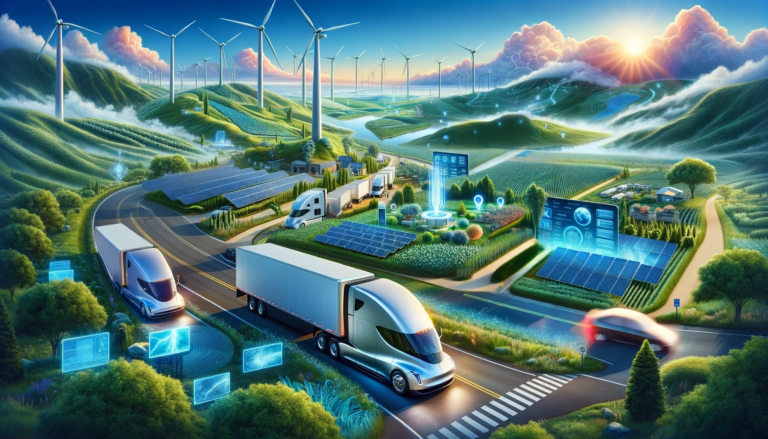Whether it’s economic turmoil driving enterprises to explore new avenues for innovation or whether we’re seeing a new era of low-barrier, rapid innovation, one thing is clear. Heading into 2023, the responsibilities of the European CIO are larger than ever–and, some might say, overflowing.
From security, sustainability, governance and digital transformation to data, AI and Web3, the set of challenges is ever-growing for today’s CIOs.
We heard firsthand about the growing demands being placed on today’s CIOs at the 2022 Sapphire Vision Summit, Europe. While our past summits focused on macro themes such as the pandemic and its aftermath, emerging technology trends amidst a rise in ESG priorities, the metaverse and more, this year’s event focused on a range of CIO-related topics.
From what we heard at the summit and throughout the past several months in dozens of conversations with our network, we see four pressing challenges impacting the European CIO heading into 2023:
- The ballooning responsibilities of CIOs and IT leaders
- The gap between enterprise buyers and startup sellers is slowing innovation
- The complex path to financially viable AI
- The convergence of sustainability and wider company strategy
Let’s take a closer look at each.
The responsibilities of today’s CIO are ballooning
From AI to sustainability to security to Web3, leaders are now expected to maintain a panoramic view over a vast number of technological developments outside of the organization.
With new tech emerging seemingly every moment, the demand for new tools is also seeping into the organization, with 76% of global CIOs and CTOs citing an increase in demand for new digital products and services.

But as Florian Roth, Chief Digital Information Officer at SAP explained at our Vision Summit last year, this isn’t just a shift in the demand for new digital tools, a complete shift in employee expectations continues to be a challenge for enterprises. “There used to be an era where the stuff you get at work was better than the stuff you use at home. Now it’s the other way around.” The consumerization of IT is nothing new, but now we’re seeing employees demand the ease of use, innovation and convenience of personal apps and tech experiences in their work platforms. Oftentimes, it’s startups that are able to deliver on these new employee expectations.
This tech trickle-down effect is asking CIOs to rethink the way they balance the scales of control and innovation. As Patrick Naef, Partner at Boyden and a speaker at the 2022 Sapphire Vision Summit, Europe, outlines in his ebook, The future of IT, “While cost might have been optimized by centralizing all of IT, the downside was that speed and innovation suffered from such an approach.”
In response to growing responsibilities, CIOs are adjusting their focus to be more agile. But how are they planning to do that? As Florian explains, it’s about accepting less control. “I want to have control of the most important products, but on the other side, we need to agree there is certain flexibility and freedom for choice of tooling – especially in the engineering space.“
As CIOs take a more active role in enabling new tech and innovation within their organizations, they must also look externally for help. As Naef puts it, “A modern CIO needs to be more entrepreneurial and less operational, meaning less risk- or cost-focussed.”
Startup engagement needs to meet in the middle
Another trend, this time from startup founders, revolves around their engagement experiences with the enterprise. Specifically, it is very difficult to work with large organizations.

In a discussion led by Sifted’s Head of Intelligence Chris Sisserian at our 2022 Sapphire Vision Summit, Europe, we heard that despite enterprises pursuing smaller businesses as a means of innovation and flexibility, startups were finding it difficult to work with these customers due to inefficient procurement cycles and difficult deal terms. Some startups end up prioritizing non-Enterprise sales opportunities because the cycles are faster and have less customization.
One of the biggest hurdles for startups is that enterprises haven’t adapted their legal requirements. Many startups find an 18- to 24-month enterprise sales cycle too high in cost and risk. Couple slow engagements with only 15% of enterprise IT spend allocated to startups and it’s clear the path for startups to work with enterprises could be made much easier.
Chris from Sifted offers a solution for innovation-hungry enterprises, “…finding a way to build a ‘start-up’ focused team internally can build a better rapport and speed up the process.”
However, this isn’t a one-sided struggle. Enterprises offer more stability in the uncertain economic times we face today. That means startups must meet enterprises in the middle, by improving their flexibility and adapting their buying cycle to fit in larger PoCs and maximize value.
Beyond the basics, for a startup to engage with an enterprise, CIOs at these large European companies like to understand how they will save on cost and see greater efficiencies. Most of the time, this is far more important than getting caught in the technical weeds.
As efficient innovation becomes a bigger focus in 2023 for CIOs and economic uncertainty has startups looking for more secure customers, a meeting in the middle is on the horizon.
A long and winding road to effective AI adoption
The AI conversation for CIOs and enterprises globally has moved beyond ‘should I invest in AI?’’ to ‘what kind of AI do I need?’
At the most collaborative end of the spectrum, AI can act as an “illuminator” that generates inputs for co-creation with humans. For example, Ben and Jerry’s used AI to process unstructured data in popular media to discover a demand for “breakfast ice cream.”
On the other end, there’s automated AI that can decide and implement decisions with human oversight, such as Rio Tinto’s autonomous mining that uses advanced robotics and AI technology to simultaneously manage loaders, haul trucks and rock crushers, making sure equipment is in the right place at the right time.
The promise of AI innovation is tantalizing, but there’s a widening gap between the idea of AI and its application–only 10% of companies today report significant financial benefits from AI.
So how can European CIOs roll out profitable AI for the enterprise? Francois Candelon, Head of the BCG Henderson Institute and leader of their Enterprise AI practice, hammered home the important interplay between AI and humans in successful AI adoption at our recent Summit. “It’s important not to optimize the AI system, but to optimize the Human and AI system to create trust, Devote 10% to the algorithm, 20% to the platform/infrastructure and 70% to change management.“
Francois’ research also lays out a four-phase approach to implementing profitable AI in the enterprise.

He suggests enterprises start with an initial discovery phase where enterprises implement specific AI applications, infrastructure and strategy. This might look something like implementing a sales model that reduces customer churn by 2%. From there, it’s about building AI applications for more specific business cases and investing in data, technology and algorithms to build AI capabilities across the organization.
With the right capabilities in place, enterprises are then ready to scale AI. With a growing number of technology options, effectively scaling AI becomes a matter of matching the right technology to a specific problem. Our very own Partner Casber Wang expertly outlines evolving AI tooling and how it’s trending towards more modular solutions for specific enterprise uses in a recent piece. This scaling stage also encourages a change from AI teams who solve specific problems to cross-functional teams that lend AI expertise across enterprise challenges.
Finally, for AI to be truly effective in the organization, Francois says enterprises must reach a level of organizational learning and adaptation so that trust in the tools can be nurtured. Getting this right has shown a 75% chance of positive financial impact for companies.
Sustainability and strategy are converging
Sustainable IT is a fast-rising conversation, especially amongst European CIOs who must contend with more stringent government regulations than their US counterparts. Consumers expect sustainability from brands and many are now making choices based on sustainability beliefs. In turn, companies are making changes to meet customers’ sustainability expectations. And that change is fast underway as more than 1/3 of Europe’s largest public companies now have a net-zero plan in place and CIOs are on the frontline of the push, with 65% adjusting their technology strategies to include the adoption of sustainability tools.
For enterprise leaders, that means viewing energy consumption, software, business practices and supply chains the same way you view all other emissions. Or as Annalise Dragic put it at the 2022 Sapphire Vision Summit, Europe, “Regardless of what you deem scope 1, 2 or 3 emissions, we’re all connected as an ecosystem that we need to propel forward.“
Though the major driver of this increased emphasis on sustainability is from outside influences such as customers, shareholders and other businesses, what we’re hearing from enterprise leaders is that addressing outside influences starts by getting buy-in from employees.

This means getting your net-zero story right internally, then going external with your goals–rather than letting external pressures influence how your company assesses sustainability. A large part of getting aligned internally comes from accountability through visibility, something in which CIOs already have significant experience from previous technology pushes.
On one end, CIOs must be connected to the technology that’s bringing visibility to sustainability efforts. As Sapphire Partner Annalise Dragic put it, “The core of sustainability is the data and having information and then how companies make decisions based on that data.”
Additional big ideas
Cloud migrations continue to evolve in complexity
Cloud migration, a transformation all enterprises are in the throes of, continues to be a staged approach that needs to be continually assessed from a financial and functional perspective. And as the adoption of new data-hungry technologies like AI ramp up, the complexity of controls and compliance will only face great scrutiny.
Cybersecurity faces more attack surfaces than ever
With more digital transformation–new tools, data and the rise of multi-cloud–the digital attack surface of enterprises is larger than ever. To combat rising threats, enterprises need to engage in stronger defense practices, such as deploying purple team and tabletop exercises and adopting zero-trust standards with strong user-access protocols, protected backups and a segmented network.
The importance of being Web3-ready
Web3 is set to change the way companies and consumers interact. A shift from company-owned data to user-owned data will require a paradigm shift in value creation for companies. Leading the way in this transformation are luxury brands like Gucci, that have NFT art exhibitions tied to their heritage. While enterprises will need to tread carefully in the wake of FTX, there is still a tremendous amount of opportunity ahead for broader blockchain innovations.
Adaptability is key
As 2023 unfolds, there will undoubtedly be new moments and technologies that will shift European CIO priorities. While we don’t exactly know what those changes will look like, we know that today’s CIO must be flexible and adapt.
We will continue to share updates and trends from European and global CIOs throughout the year, but for now, you can dig deeper into the insights in this piece by watching the sessions from the recent 2022 Sapphire Vision Summit, Europe.



